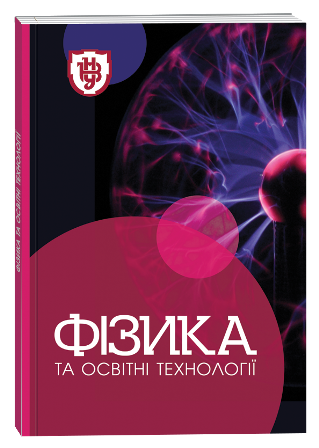ABOUT TRANSITION OF DECLARATIVE KNOWLEDGE IN PROCEDURAL SKILLS WHILE TRAINING IN THE WIDE SPECTRUM OF DISCIPLINES
DOI:
https://doi.org/10.32782/pet-2023-2-1Keywords:
declarative knowledge, procedural skills and abilities training, model of the processAbstract
The specifics of the formation of procedural skills, when these skills are determined by declarative instructions, are considered. Attention is paid to aspects of the similarity of this process in the field of computer science and in sports training. The dynamics of the transit of declarative knowledge into procedural skills and abilities are considered on the example of performing sequences of standard actions, each of which does not cause coordination difficulties. In the course of the study, statistical distributions of the speed of actions of individual tasks in working with files and texts in the Windows interface were obtained and analyzed. The distributions corresponding to different attempts to complete task packages by large groups of students were compared. A model approach to the analysis of statistical distributions of task execution speeds is applied. Experimental distributions in the model are represented by the sums of normal contours shifted relative to each other in the scale of task performance. Each normal contour in this model corresponded to one of the four states of procedural skill formation. The area under the model contour corresponds to the number of people in the corresponding state of skill formation. Extreme states, in this context, are: a state of slow execution, when a person performs actions while being aware of each step; and the state that is targeted in training, the state of rapid action, when actions are fully automated and sensorimotor functions work almost without the involvement of consciousness. From trial to trial, the experimental distributions shifted toward high performance and narrowed. The analysis of the dynamics of this process is based on the metaphor of pumping areas from under the normal contours of slow work to under the contours of high-speed work. Corresponding graphs are constructed. An analysis of the transformation of distribution areas for the dynamics of the training process was made. Recommendations were made regarding the specifics of training in the context of the obtained results.
References
Абдуллаєв А.К. (2018). Теорія і методика викладання вільної боротьби: Вид. 2-е, пероб. Мелітополь: ФОП Однорог Т.В., 299 с.
Бурлака І.В., Лукачина А.В. (2022). Фізичне виховання: Теніс [Електронний ресурс]: навч. посіб. для здобувачів ступеня бакалавра. Київ: КПІ ім. Ігоря Сікорського, 75 с.
Головін М.Б. (2018). Дослідження процесів навчання на основі аналізу моментів статистичних розподілів швидкостей навчальних дій (на матеріалах вивчення інформатики). Психологічні перспективи. Випуск 18. Луцьк, С. 72 – 82. URI: https://evnuir.vnu.edu.ua/handle/123456789/1743/
Головін М.Б. (2011). Аналіз процесу навчання за допомогою статистичних розподілів швидкостей навчальних дій (на прикладі вивчення інформатики) Вісник Волинського університету. Серія педагогічні науки. Випуск 17. С. 4 – 9. https://evnuir.vnu.edu.ua/bitstream/123456789/4850/1/golovin_statrozp.pdf
Гринь О. Р. (2015). Психологічне забезпечення та супровід підготовки кваліфікованих спортсменів. Київ: Вид-во «Олімпійська література», 276с.
Канеман Деніел (2021). Мислення швидке й повільне / пер. з англ. Максим Яковлєв. 5-те вид. К.: Наш Формат, 480 с.
Кутек Т. Б., Вовченко І. І. (2022). Основи теорії і методики спортивної підготовки: навч. посібн. Житомир: ЖДУ імені Івана Франка, 108 с.
Нишияма Х., Браун Р. (1991). Каратэ, или искусство борьбы пустой рукой. Часть 1. Харьков: РИО Облполиграфиздата, 120 с.
Gade, M., Druey, M., Souza, A., S. Oberauer, K. (2014). Interference within and between declarative and procedural representations in working memory, Journal of Memory and Language, 76, 174–194.
Fitts, P. M. (1954). The information capacity of the human motor system in controlling the amplitude of movement. Journal of Experimental Psychology, 47 (6), 381–391.
Oberauer, K. (2009). Design for a Working Memory. The Psychology of Learning and Motivation, 51, 45–100.
Seth, Anil K.; Bayne, Tim (2022). Theories of consciousness. Nature Reviews Neuroscience (англ.) 23 (7). 439–452.








